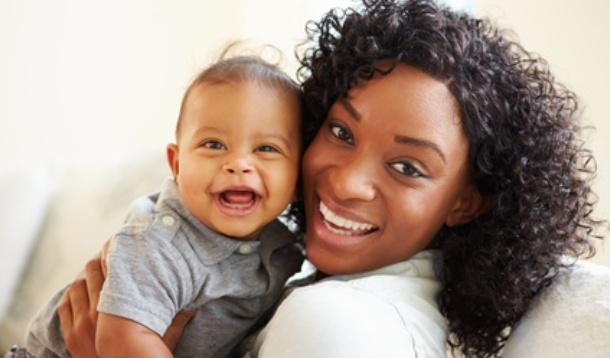
Why sign with your baby?
The cheeky answer to that question is - why not? Julie Roberts did it, Debra Messing did it, and Nicole Ritchie plans to do it. As an informed parent though, I know you want more than just what's trendy - you want the facts.
Signing with your baby - using American Sign Language vocabulary along with your speech - will not delay your baby's speech and language development. Studies show that it can enhance language development.
The area of a baby's brain that is responsible for understanding what is seen (visual area) develops before the area that is responsible for what is heard (auditory area). This means that babies can understand what is being shown to them earlier than what is said to them. So if you consistently show your baby the sign for MILK while saying the word, it is most likely the case at 4-5 months that she'll be calming down because she understands what she's seeing, not necessarily what she is hearing, yet. Keep in mind that all babies develop differently.
The gross motor ability to sign starts developing around 6-7 months (every baby is different) while the finer motor skills needed for speech develop from 12 months onward. This is how easy it is to sign FISH, one hand moving as if imitating the tail of a fishing swimming. My son signed this at 9 months. He started attempting to say it at 12 months, "pish", and it wasn't until he was two years that he clearly said "fish"
During the terrible two's most challenging behaviours occur because a toddler can't make themselves understood (and they are transitioning out of naps!) She wants your attention, and can't get it appropriately; she wants to escape a situation (e.g. diaper changing) and can't do it appropriately; she wants something and can't communicate this effectively and/or appropriately. Sign allows toddlers to communicate clearly and appropriately - no more 20 questions and meltdowns are lessened.
Sign also allows you to communicate with your family in places where you need to be quiet, at church or at the library. It allows you to communicate through glass windows.
I remember giving my children, who were in the backyard, instructions while in the house one winter. I signed STOP. NO SNOW on DOG. SHOVEL DOWN!
When I dropped them off at gymnastics today, they were in the gym and I was in the parent viewing room and we were separated by glass, so I signed I LOVE YOU to them.
I can sign to my son when he's on the hockey rink. He started to laugh so hard when he realized he couldn't sign I LOVE YOU back with hockey gloves on!
![]() RELATED: Top Toddler Parenting Resources for Help and Giggles
RELATED: Top Toddler Parenting Resources for Help and Giggles